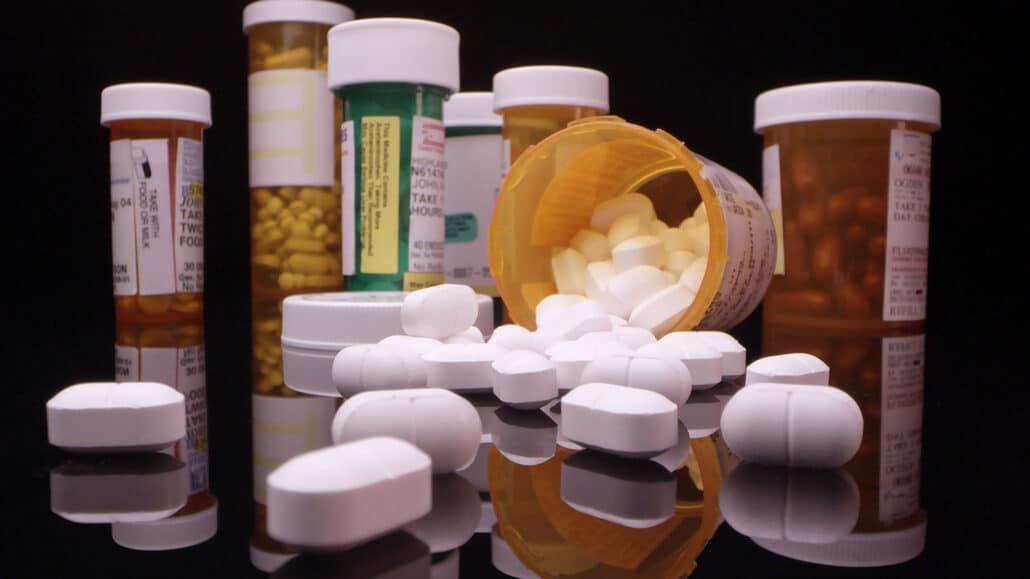Few things are more attention-grabbing than hearing that an estimated 21 million Americans have a substance use disorder (SUD). But that’s the grim reality, according to an Association of American Medical Colleges (AAMC) study. Another study from the National Institutes of Health (NIH) revealed only 1 in 10 Americans with a substance use disorder ever get the help they need to break the cycle of addiction. The ones who manage to go to rehab, especially to get help overcoming hard-to-quit substances, such as opioids, sometimes don’t get the medical care they need to cope with difficult withdrawal symptoms as they go through detox. According to the same data from the AAMC, the U.S. only has around 3,000 physicians specifically trained to treat individuals stricken with the disease that is addiction.
Table of Contents
- 1 The Truth About America’s Substance Abuse Crisis
- 2 Shedding Light on Addiction Demographics: What Kind of People Are Struggling With Drugs or Alcohol in America?
- 3 The True Cost of America’s Addiction Crisis
- 4 How Fentanyl Is Making an Already Bad Situation Worse in America
- 5 Addiction Treatment: Why the Right Rehab Program Matters
The Truth About America’s Substance Abuse Crisis
A crisis is a perfect descriptor for the substance abuse problem that has America in its grips. And that’s because substance abuse has contributed to higher incidences of crime and hospitalizations due to people overdosing on drugs, developing alcohol poisoning, or being injured by someone under the influence of drugs, alcohol, or maybe both. One thing for sure is addiction knows no bounds. It is a disease that has impacted and upended the lives of many men, women, and even children. By the way, none of this is unsubstantiated hyperbole. We need only look at statistical data published by the National Center for Drug Abuse Statistics (NCDAS) to appreciate how much of an equal opportunity life destroyer addiction is. The data notes that around 50% of individuals aged 12 and older have tried illicit drugs at least once, and since 2000, nearly 1 million people have died of a drug overdose. It also revealed that the following are among the most abused substances in the U.S.:
- Cocaine
- Hallucinogens
- Marijuana
- Methamphetamines
- Opioids and other prescription pain relievers
- Sedatives

Shedding Light on Addiction Demographics: What Kind of People Are Struggling With Drugs or Alcohol in America?
When looking at substance abuse demographics in the U.S., a few things stand out a bit more than others, the first of which is addiction starts early for some people. Available data shows more than 47% use and, in many cases, become addicted to drugs before they finish high school, with many trying drugs or alcohol for the first time in middle school. To further emphasize this point, the data highlights how 70% of people who experiment with drugs before age 13 develop a substance abuse disorder within seven years. As of the writing of this article, approximately 39% of adults aged 18 to 25 and 34% of adults aged 26 to 29 abuse alcohol, drugs, or both, respectively. The rate of substance abuse among these adults is higher for some racial and ethnic groups than others. The breakdown, according to the Substance Abuse and Mental Health Services Administration (SAMHSA), is as follows:
- 4.8% of Asian Americans
- 6.9% of African Americans
- 7.1% of Hispanic or Latinos
- 7.7% of Caucasians
- 9.3% of Native Hawaiian and other Pacific Islanders
- 10.1% of Alaskan Natives or Native Americans
The True Cost of America’s Addiction Crisis
Addiction is a disease that costs everyone dearly, not just the individual user. In a 2017 study, the most recent and relevant study available, researchers revealed substance abuse costs the U.S. nearly $272 billion, with most of that cost going toward combating crime, hospitalizations, lost work productivity, and other impacts on society. Soon substance abuse might be costing the U.S. even more as more people are making opioids, namely fentanyl, their drug of choice. The hospitalization and overdose death rate associated with fentanyl is higher than that of alcohol, cocaine, methamphetamine, and other popular drugs.
How Fentanyl Is Making an Already Bad Situation Worse in America
No article covering substance abuse and addiction would be complete without discussing the fentanyl problem in America, which some argue is worse than the crack cocaine problem of the 1980s. And that’s saying something. While OxyContin, heroin, and other opioids are a problem in the U.S., they don’t rise to the level of fentanyl when it comes to the number of people falling victim to addiction and dying from an overdose. A synthetic opioid, fentanyl accounts for 90% of all opioid-related overdoses and more than 65% of all drug overdoses in general. To further emphasize this point, an estimated 70,000 people overdosed on fentanyl in 2021. While we are on the topic, some of the tell-tale signs of a fentanyl overdose include the following:
- A limp body
- Choking or gurgling sounds
- Cold or clammy skin
- Discolored skin
- Loss of consciousness
- Respiratory depression
- Small, constricted pupils
When someone stops taking fentanyl, they go through an even worse experience; many encounter the following withdrawal symptoms when they begin to detox from the powerful synthetic opioid:
- Agitation and anxiety
- Muscle aches
- Nausea and vomiting
- Stomach upset and diarrhea
- Profuse sweating
- Trouble sleeping
It is worth pointing out that, in addition to these symptoms, some people suffer from severe dehydration due to the loss of fluids caused by nausea, sweating, and diarrhea when they suddenly stop taking fentanyl. They might also develop above-average blood sodium levels. According to a study published by the University of New South Wales, a public research university in Sydney, New South Wales, Australia, high blood sodium levels and dehydration can be fatal for some. The severity of the withdrawal symptoms, and the other harsh effects of being on the drug, make fentanyl one of the most dangerous drugs someone could get hooked on. That’s why there is a strong push in the U.S. to get as many people struggling with fentanyl addiction to seek help at a licensed rehab facility as soon as possible.

The Fentanyl Withdrawal Timeline
The withdrawal symptoms triggered by fentanyl detox generally don’t strike at once. The first wave of symptoms usually starts 12 hours after someone has consumed their final dose and includes mostly muscle cramps, restless legs, sweating, nausea, and vomiting. Within 48 to 72 hours, fentanyl withdrawal symptoms will usually peak and eventually fade away within 3 to 7 days.
Peak fentanyl withdrawal symptoms often include nausea, diarrhea, vomiting, and muscle and bone pain. In rare cases, some people develop post-acute withdrawal syndrome after quitting fentanyl. Also known as the protracted withdrawal phase, post-acute withdrawal syndrome refers to fentanyl withdrawal symptoms that linger for weeks or months after someone stops taking the drug. These lingering symptoms can include anxiety, cravings, depression, irritability, and sleep disturbances.
Addiction Treatment: Why the Right Rehab Program Matters
When it comes to addiction recovery treatments, there is no one-size-fits-all approach. The way most rehab facilities help individuals quit fentanyl and other opioids, for example, is very different from how they help individuals quit marijuana and other less addictive drugs. Often with fentanyl and, in most cases, alcohol, the go-to is inpatient treatment. Meanwhile, outpatient rehab is the usual go-to for individuals who need help overcoming milder addictions. To better understand why inpatient rehab programs make sense for some while outpatient rehab programs make sense for others, it helps to look at each individually.
Inpatient treatment
Also referred to as residential treatment, an inpatient treatment program is ideal when someone needs help overcoming an illicit substance known to trigger severe withdrawal symptoms after they’ve stopped using. Studies show 40% to 60% of people trying to quit drugs or alcohol relapse while still in rehab. Most do so because of their inability to cope with severe pain, nausea, cravings, and other difficult withdrawal symptoms. Inpatient treatment programs lower the likelihood of that happening by requiring individuals to remain onsite for the entirety of their addiction recovery journey, which can last anywhere from 30 to 90 days. These programs provide medication-assisted treatment, which comprises round-the-clock medical care and access to FDA-approved drugs to help combat severe withdrawal symptoms. Many also offer addiction counseling with a licensed therapist. These counseling sessions will typically include one of the three following forms of psychotherapy:
- Cognitive behavioral therapy (CBT)
- Contingency management
- Motivational interviewing
As an aside, these varying counseling sessions can benefit those struggling with a co-occurring disorder or those who need help identifying what drove them to start abusing drugs or alcohol in the first place, which can go a long way toward minimizing their chances of falling victim to the same or similar triggers in the future.
Outpatient Treatment
Outpatient treatment programs offer many of the same treatments and therapies as their inpatient counterparts, with only a few exceptions. Unlike their inpatient counterparts, outpatient programs allow individuals the freedom to fulfill work and family obligations in between treatments. Because they provide that degree of freedom, individuals are subject to random drug and alcohol screenings each time they leave and return to the program. Lastly, most outpatient treatment programs don’t provide medication-assisted treatments. That aside, outpatient treatment programs provide individuals with access to counseling, addiction education, referrals to support groups, and many other things needed to help them finally break the cycle of addiction.
Faith-Based Treatments
Those who are religious or spiritual and who are trying to quit drugs or alcohol sometimes find faith-based addiction recovery treatments to be more beneficial than traditional treatments. These treatment programs follow many of the same addiction recovery protocols as non-faith-based ones. The difference, however, is those addiction recovery protocols have a religious or spiritual undertone that speaks to individuals trying to break the cycle of addiction in a very different way. Faith-based addiction recovery treatments can comprise inpatient or outpatient treatment programs.

Support Groups
Addiction recovery doesn’t always end when someone completes rehab; it sometimes marks the beginning of another chapter in their journey toward sobriety. Many rehab facilities refer individuals to support groups after they have completed rehab, with Alcoholics Anonymous (AA) and Narcotics Anonymous (NA) being the most common. However, many also arrange referrals to SMART, a support program for people with addictions and behavioral disorders, and Al-Anon and Nar-Anon, which are alternatives to AA and NA, respectively. The mission of these and other support groups, as it relates to helping people turn their lives around, is as follows:
- To enable individuals to connect with others who are also trying to regain control over their lives
- To inspire, encourage, and motivate all individuals to take one day at a time
- To provide a safe, supportive environment where individuals are free to share their feelings
- To teach individuals coping skills that will minimize their risk of relapsing
Support groups offer a wide range of benefits to anyone who joins them, some of which include the following:
- Being free to express genuine emotions without fear
- Feeling empowered each time they can report being clean for however many days since the last time they used
- Feeling less alone while fighting to maintain sobriety
- Learning coping strategies that make it easier to overcome the temptation to start abusing drugs or alcohol again
- Learning how to prioritize self-care
- The satisfaction of helping others who are also on a path of addiction recovery
In summary, many addiction treatments can help individuals end their relationship with drugs, alcohol, or both. Of course, choosing the right one is sometimes easier said than done.
Please contact Long Island Interventions for information about Addiction Treatment near you.

